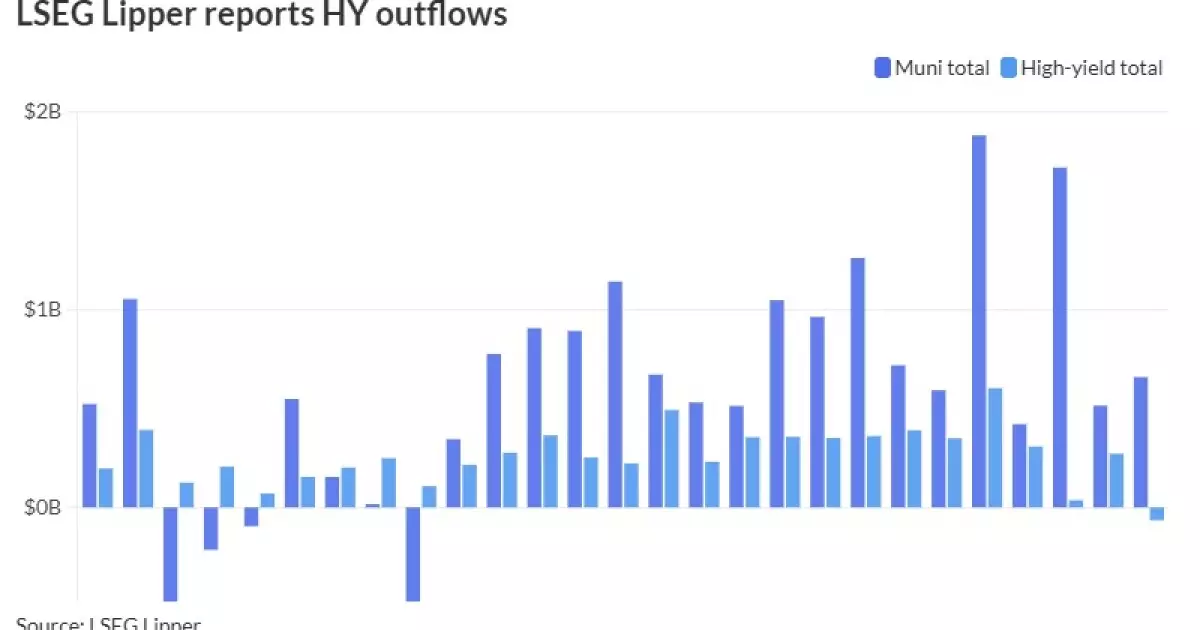The municipal bonds market experienced some noteworthy developments as October draws to a close. Overall, the session displayed relatively minor changes, marked by a limited number of substantial deals and an intriguing shift in investor behavior. As the market foundations were tested, the dynamics of supply, demand, and yield adjustments continue to affect participants.
In the final trading session of October, municipal bonds, commonly referred to as munis, showcased a slight change in prices as participants weighed their options amidst a wider economic backdrop. Although recent days yielded slight adjustments, the month consisted of an upward trajectory, drawing attention due to the increased acquisition interest emerging from buyers. Kim Olsan, a seasoned fixed income portfolio manager, highlighted how this upward correction has introduced enticing raw yields, positioning the market in favorable conditions for buyers.
Contrastingly, the Bloomberg Municipal Index revealed a rather unsettling statistic – a loss of 1.51% was logged by Thursday’s close, marking its most substantial decline since October 2009. This situation stood in stark contrast to the 2.42% drop in U.S. Treasuries (USTs), which added to the caution in the investor community. The attention shifted to relative value with a distinct focus, particularly as ratios across various municipal bond maturities fluctuated, indicating potential opportunities available for discerning investors.
Olsan’s insights shed light on the evolving yield landscape within the municipal bond market. As the month progressed, taxable equivalent yields (TEYs) showcased significant improvement, with notable widening of spreads driving attention. The short end of the yield curve shifted into a zone that Olsan identified as supportive of “defensive positioning,” particularly as one-year maturity single-A rated revenue bonds moved toward a yield of around 3.20%.
The real interest lay in the intermediate term bonds, where AAA-rated 10-year bonds tipped above the 3.00% mark. For instance, a recently issued 10-year general obligation bond from Washington State drew 3.24%, leading to a TEY that emphasizes the adjustment and overall returns now accessible. As investment opportunities abound across various maturities, the potential allure of 20-year bonds promises yields approximately around 3.75% for AA-rated bonds, encouraging prudent investment strategies.
As October saw a peak in municipal supply, with issuance reaching over $56 billion, current indications point toward a decline in the coming weeks. The primary market buzzed with activity as multiple offerings took place, including BofA Securities pricing $188.895 million of Fircrest Properties’ sustainability lease revenue bonds. In stark contrast, forecasts for the upcoming period suggest a notable reduction in sizeable offerings — with only $3.77 billion visible in supplies lined up for the subsequent weeks.
This divergence adds an element of unpredictability to the market. Participants are beginning to brace for a quieter environment, particularly as attention shifts towards the forthcoming elections and their potential impact on fiscal policies.
An interesting point of note is the fluctuating flow of investments in municipal bond mutual funds. Recent statistics revealed an inflow of $659 million among these funds, continuing a positive trend spanning 19 weeks. However, a deeper dive into the numbers showed a surprising shift in high-yield funds experiencing their first outflows since mid-April, leading some to question the sustainability of recent inflows.
Investors displayed a particular preference for long-term and intermediate-term funds, which absorbed substantial inflows, while short-term funds attracted only modest interest. Such behavioral shifts indicate a broader inclination toward securing longer yields amidst changing economic conditions, showcasing a strategic approach among discerning investors.
As the month of October wraps up, the municipal bond market stands at a crossroad with shifting dynamics. The stabilization evidenced by minor fluctuations doesn’t negate underlying concerns regarding broader economic forces. With the significant yield improvements offering newfound opportunities, observers will keenly watch for the impact of upcoming elections on market behaviors. The confluence of heightened yields, potential pricing corrections, and shifting fund flows sets a compelling scene for both cautious and aggressive investors alike.
Ultimately, the municipal bond arena remains intricate and layered, necessitating careful consideration and astute strategies as participants navigate through these evolving landscapes.


Leave a Reply